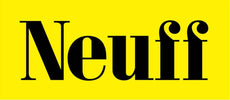
A Beginners Guide to Glide vs Rotational Shot Technique
By Throwers Universe
Picking between the glide and rotation is an age-old question asked by athletes, coaches and critics.
Both are very complicated techniques in their own right. In simple terms, the rotation is exactly what it sounds like: a spinning motion followed by a release of the shot at the very end. The glide, however, is more of an exaggerated, explosive backwards lunge followed by the release of the shot.
How do I pick a shot put technique?

- Head out to your nearest circle and take some standing throws to get some feeling for the throw.
- Gradually move onto a simple technique (any step back) to get some speed into the shot.
- Watch a lot of videos of modern and old school greats of the sport rotating and gliding to understand the mechanics of the different techniques.
How do I know if I should use the glide technique?

- You are very tall (long levers will accelerate distance, to begin with - you will need less technical emphasis to see distance at the start)
- You can throw far from a standing throw (a typical trait of successful gliders is a big standing throw)
- You have just started throwing (glide is easier to pick up, to begin with)
How do I know if I should use the rotation technique?

- You are naturally athletic / can move well.
- You do not have a big standing throw (most rotational throwers do not have huge standing throws, i.e. Tom Walsh of New Zealand, who has said his standing throws are around 15m - he is nearly a 23m thrower!)
- You can take multiple technical cues at once (the rotation is unforgiving, so you will have to work hard to execute numerous things in each throw. One technical cue being wrong could ruin the whole throw!)
Which professional athletes should I watch?
Focus on the technical aspects of these athletes:
Glide - Ulf Timmerman, David Storl, Lijao Gong, Auriol Dongmo
Rotation - Ryan Crouser, Joe Kovacs, Raven Saunders, Maggie Ewen
How should I train for these shot put techniques?

The basic blueprint is to do a mixture of Olympic lifts, power lifts, plyometrics and sprints. The exercises, number of sets, reps, and weights lifted will, of course, depend on the time of the year and part of the season you are in. If you are one week out from a big competition, you don’t want to be doing a whole week of high intensity, heavy lifting. You want to tailor it down to some carefully selected lifts and movements to ensure maximal performances when it matters.
As a glider, working on linear and core exercises and becoming more explosive and athletic is key to developing your ability. This can be done through plyometrics and Olympic lifts.
As a rotator, similar is true, but developing rotational power will benefit you more.
Overall, the primary key to developing into your maximum potential is finding a coach willing to invest in your growth as an athlete - technically and physically.


Leave a comment